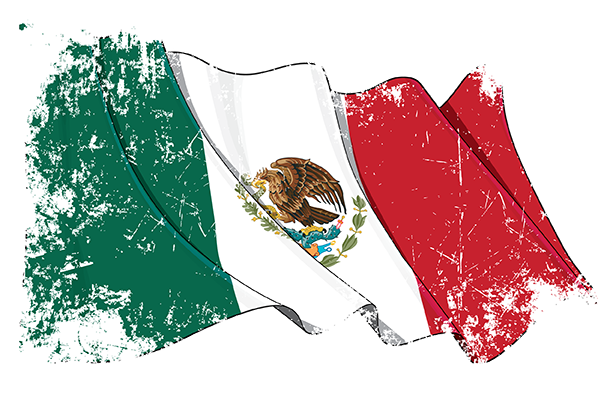 It's no fiesta right now for the peso. The currency recently dropped to a record low—in part over lingering doubts about the future of U.S.-Mexico trade relations under a Trump presidency. The president-elect's rhetoric of reducing business ties with Mexico has fueled these doubts, helping to make the peso one of the world's worst-performing currencies of late. In particular, Trump has been vocal about enforcing tariffs on goods made in Mexico, withdrawing from the North American Free Trade Agreement (NAFTA), levying taxes on cash remittances from America to Mexico, and building a wall along the border, which he wants Mexico to pay for.
It's no fiesta right now for the peso. The currency recently dropped to a record low—in part over lingering doubts about the future of U.S.-Mexico trade relations under a Trump presidency. The president-elect's rhetoric of reducing business ties with Mexico has fueled these doubts, helping to make the peso one of the world's worst-performing currencies of late. In particular, Trump has been vocal about enforcing tariffs on goods made in Mexico, withdrawing from the North American Free Trade Agreement (NAFTA), levying taxes on cash remittances from America to Mexico, and building a wall along the border, which he wants Mexico to pay for.
Mexico is the third-largest trading partner for the United States, so needless to say, there is much at stake here for both countries. The two countries have had strong economic ties through NAFTA, which has been in effect since 1994; most of the bilateral trade happens in the context of supply chains in which goods are manufactured across the border. If the United States were to pull out of NAFTA, that move would likely have adverse effects on an already battered peso.
For businesses handling cash flows to and from Mexico, strategies around currency conversion should not be treated lightly. Treasury and finance professionals should ensure that proper controls are in place to mitigate exchange-rate losses stemming from peso volatility. These may include the use of specific financial instruments, as well as comprehensive analytics platforms and related technological tools.
Recommended For You
Financial controllers should consider two key points when determining how to maximize gains when making payments for services rendered by Mexican businesses:
1. Consider interest rates' impact.
The central bank of Mexico recently raised its interest rate by 50 basis points, to 5.25 percent, while the U.S. Fed rate has remained relatively stable. With a Fed hike looking increasingly possible, volatility between the dollar and peso is likely to resume. Timing major transactions or expenditures to take advantage of interest rate circumstances is one strategy that cash flow specialists can undertake, and one that requires sophisticated analytics tools to optimize.
2. Foreign exchange hedging.
With a strong dollar in hand, now could be a good time for U.S. businesses to make transactions to clear off outstanding payments. At the same time, it would be wise to lock in this low rate for planned future purchases, using a hedge. A "window forward" contract, where exchanges can be made on or before a particular date, is a good option to overcome market volatility.
Overall, the peso's volatility of late could mean opportunity for multinationals exposed to the Mexican currency. Finance professionals at these organizations will want to plan transactions carefully and structure them in a way that will optimize FX rate considerations. FX forwards indicate that the peso could continue to depreciate and disrupt the balance of the existing payments structure.
 Natasha Lala is the managing director of OANDA's Solutions for Business group, which provides a full suite of foreign exchange (FX) services, trusted by the Big Four, tax authorities, and thousands of clients worldwide. Lala has been at OANDA since 2003 in a variety of executive roles, helping clients navigate FX markets. Previously, Natasha led large-scale client-facing initiatives in the CRM, telecom, and financial industries.
Natasha Lala is the managing director of OANDA's Solutions for Business group, which provides a full suite of foreign exchange (FX) services, trusted by the Big Four, tax authorities, and thousands of clients worldwide. Lala has been at OANDA since 2003 in a variety of executive roles, helping clients navigate FX markets. Previously, Natasha led large-scale client-facing initiatives in the CRM, telecom, and financial industries.
© 2025 ALM Global, LLC, All Rights Reserved. Request academic re-use from www.copyright.com. All other uses, submit a request to [email protected]. For more information visit Asset & Logo Licensing.




